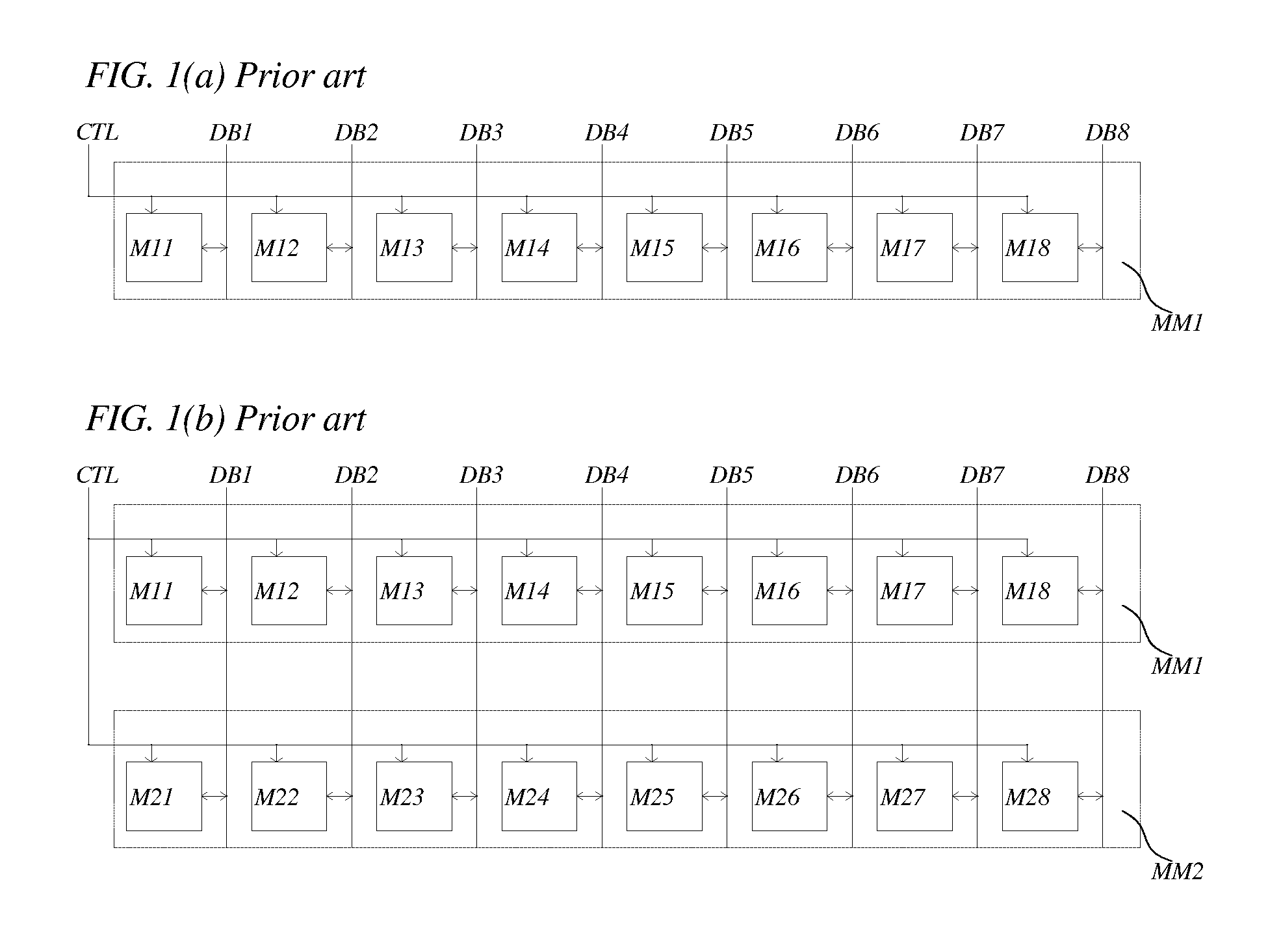High performance high capacity memory systems
a memory system and high-capacity technology, applied in the field of high-capacity high-capacity memory systems, can solve the problems of limiting factors, high performance and high capacity conflicting requirements, degradation of performance and/or stability, etc., and achieve the effect of high capacity, low cost and no increase in data signal loading
- Summary
- Abstract
- Description
- Claims
- Application Information
AI Technical Summary
Benefits of technology
Problems solved by technology
Method used
Image
Examples
Embodiment Construction
[0035]FIG. 3(a) is a simplified schematic block diagram for one example of the Multiplexed Memory Buffer (MMB) module of the present invention. In this example, the MMB memory module (MMB1) comprises 8 memory chips (M11, M21, M31, M41, M51, M61, M71, M81). Comparing to the prior art memory module in FIG. 1(a), the key difference is that the memory chips (M11-M18) in the prior art memory module is arranged in parallel data connection to support a complete set of system data signals (DB1-DB8). In contrast, the memory chips (M11, M21, M31, M41, M51, M61, M71, M81) in memory modules of the present invention is arranged to support a sub set (DB1) of the system data signals, while the first memory chip (M11) supports DB1, the second memory chip (M21) supports DB1, and the eighth memory chip (M81) also supports DB1. In other words, all those memory chips (M11, M21, M31, M41, M51, M61, M71, M81) are arranged to support the same data signals (DB1). The functions of those memory chips are equ...
PUM
 Login to View More
Login to View More Abstract
Description
Claims
Application Information
 Login to View More
Login to View More - R&D Engineer
- R&D Manager
- IP Professional
- Industry Leading Data Capabilities
- Powerful AI technology
- Patent DNA Extraction
Browse by: Latest US Patents, China's latest patents, Technical Efficacy Thesaurus, Application Domain, Technology Topic, Popular Technical Reports.
© 2024 PatSnap. All rights reserved.Legal|Privacy policy|Modern Slavery Act Transparency Statement|Sitemap|About US| Contact US: help@patsnap.com










